Top 25 Famous American Foods and Beverages
Top 25 Famous American Foods and Beverages
Updated on September 16, 2022 16:21 PM by Laura Mendes
Chili con Carne
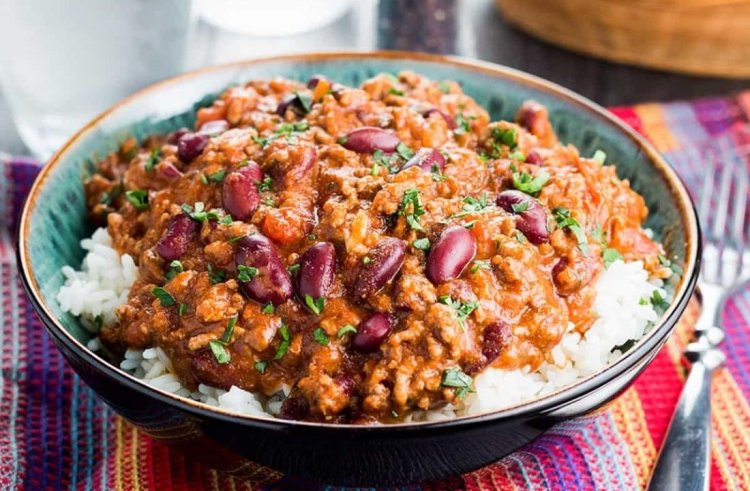
Some people believe that chili con Carne is a traditional Mexican cuisine. It is an original American dish cooked only in a few spots in Mexico to cater to visitors.
If the dish were Mexican, it would remain a fixture in Mexican restaurants across the country, as classic cuisines do not go away readily in Mexico.
Chili con carne is a meat-based stew made with finely diced beef, fiery chilies, seasonings, and water, though the same elements that go into a chili are debatable. Purists argue that a true chili contains neither tomatoes nor beans, although many others disagree.
Coleslaw
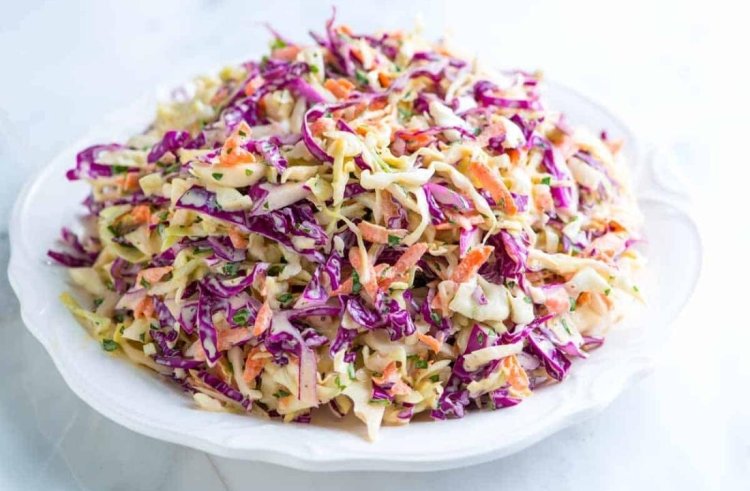
Coleslaw, derived from the Dutch name Koolsla, which means cabbage salad, is today a true American classic and a side dish frequently served with grilled pork or fried chicken. It was originally brought to New York state by Dutch settlers in the 18th century.
Depending on the cook and regional variations, it includes shredded cabbage, mayonnaise, carrots, buttermilk or sour cream, vinegar, sugar, and other ingredients. Salad dressings, celery seeds, grated cheese, pineapple, or peppers are among the items used in some of the variations.
Also read: Top 11 world's biggest fast food chains with a huge net worth
Add Block
Crab Cake
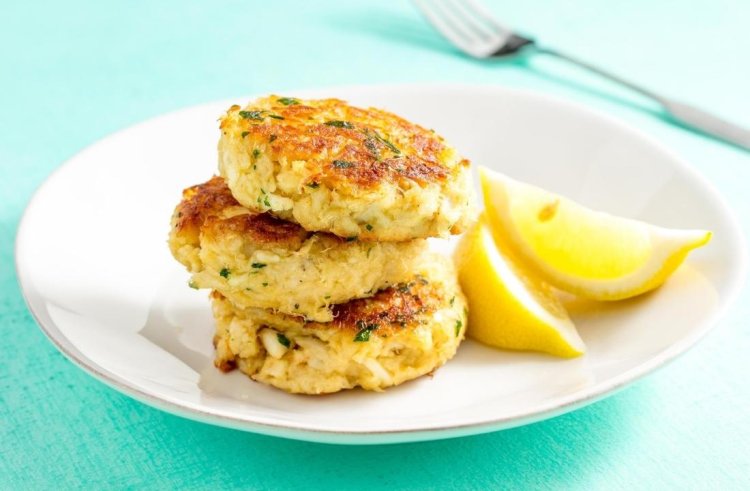
The crab cake is a famous American fishcake made with shellfish meat, breadcrumbs, eggs, and seasonings, including mustard, Worcestershire sauce, and fresh herbs. The idea of combining minced fish meat with other seasonings dates back to prehistoric times when supplies were few.
English settlers are thought to have introduced a form of crab cake to the early colonies. There are several 19th-century recipes for crab cakes, many of which contain bread crumbs and seasonings, while others are fried.
S'more
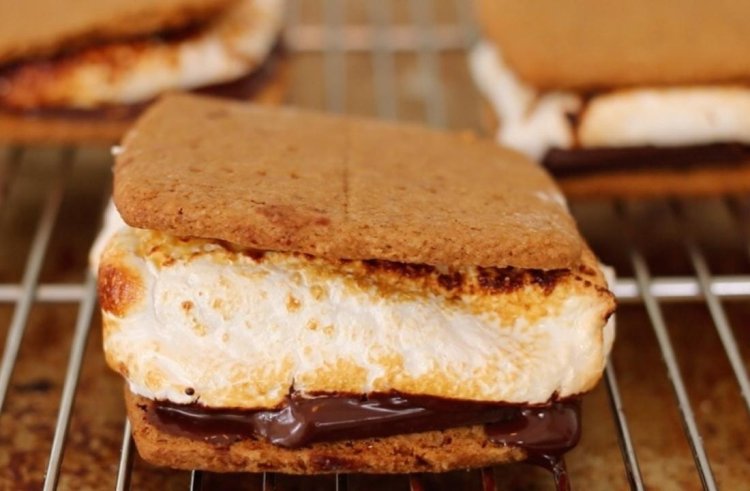
A toasted marshmallow and a layer of chocolate sandwiched between two graham crackers that are s'more, its name originating from a derivation of the phrase "some more," because everyone who tried it was soon hooked.
The Girl Scouts are credited with inventing this delectable nocturnal snack, first described in their 1927 book Tramping and Trailing with the Girl Scouts. Loretta Scott Crew was given credit for the same recipe.
Add Block
Sundae
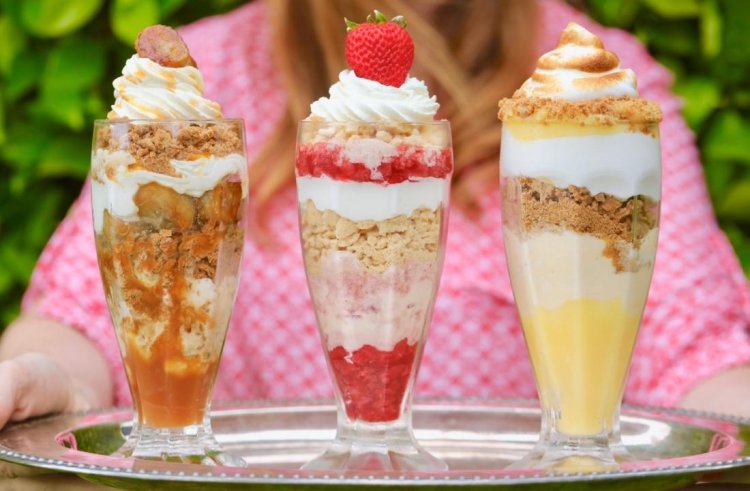
Sundaes and Banana Split are among the most popular ice cream-based sweets in the United States of America. A sundae is ice cream covered with a sauce or syrup and is often served in a bowl. Chocolate caramel, butterscotch, and strawberry are the most popular sundae flavors.
The most common additions to the popular treat are cherries, dairy cream, and nuts. Food historians debate the origins of the ice cream sundae, but three theories remain the most popular. According to the first, it was invented in Illinois, where it was illegal to sell soda water on Sundays.
Add Block
Pepperoni
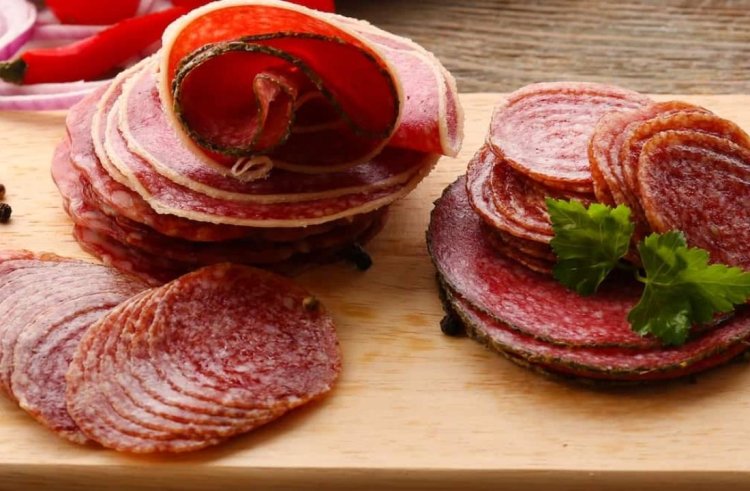
Traditional American pepperoni is a dry smoked and air-dried sausage, though it can also be cooked. It is prepared from pig, beef, or a combination of the two, typically 30% beef and 70% pork. The sausage is normally soft, with a smoky flavor and a vivid red color from paprika and cayenne pepper.
Peppers, fennel, garlic, and mustard seeds are common seasonings. Its fast-fermented, thinly sliced variant is frequently used as a pizza topping in many American-style pizza joints. It is America's most popular topping, appearing on over 35% of all pizza orders.
Also read: Top10 Food Rivalries from around the World
BLT Sandwich
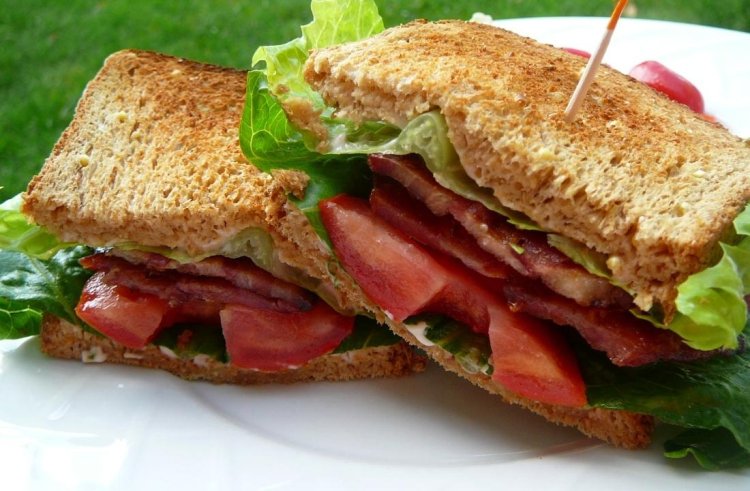
Crispy, crunchy, salty bacon, fresh, slightly acidic tomatoes, cooled lettuce, mayonnaise, and toast - there is little room for error when assembling a BLT sandwich.
According to food writer Mimi Sheraton, there are specific requirements for the ingredients: the bacon must be hot, freshly fried, and exceptionally crispy; the tomatoes must be ripe and thinly sliced; the lettuce must have bite and flavor; and the bread must be toasted till golden brown.
The origins of BLT are unknown, but some believe it evolved from bacon sandwiches served at teatime in the English countryside since Victorian times.
The BLT sandwich first appeared in British cookbooks in the late 1920s, and its popularity skyrocketed in America after World War II due to two key factors: lettuce and tomatoes became widely available in supermarkets, and women, who were traditional housewives, began to work outside the home in far greater numbers than before the war.
Apple Pie
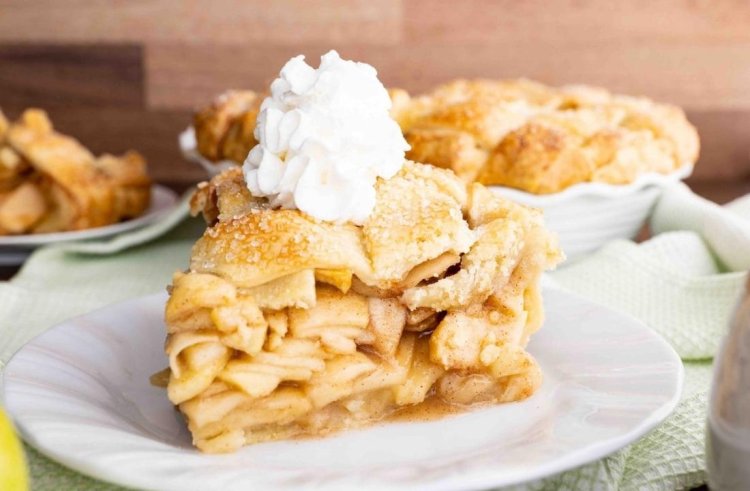
Although England has a long tradition of manufacturing meat and fruit pies, which served as inspiration for American equivalents, nothing is more associated with American delicacies than apple pie.
Apple pies are sold everywhere in the United States, from large grocery stores and restaurants to coffee shops and home bakers, and are baked until the double crust is golden brown and filled with cinnamon-sugar coated apples.
Homemade American apple pie is a source of great pride, prompting debate about which apple variety best suits the tastiest pies. Granny Smiths are popular but sour and require too much sugar, resulting in a soggy crust.
Add Block
Fudge
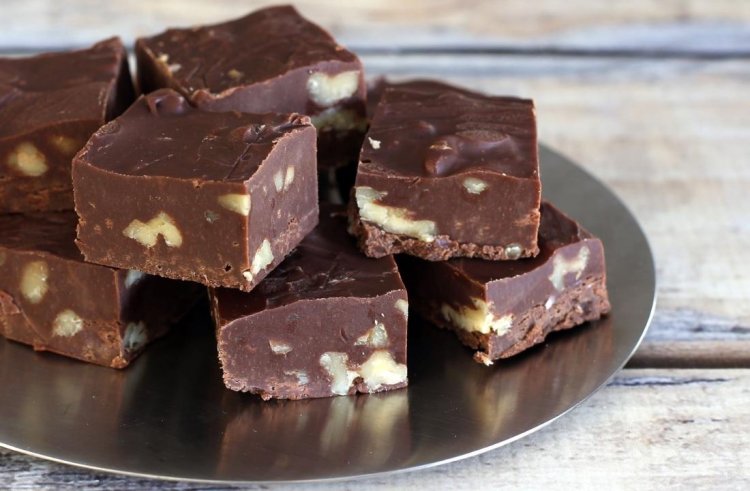
Fudge is a rich American dessert made with milk, sugar, butter, and various toppings and flavorings. It is made by heating milk, butter, and sugar to 240 °F/116 °C and then beating it while it cools to form creamy but firm blocks sliced into delicate pieces.
In the United States, modern manufacturers substituted cream for milk, resulting in an even smoother and sweeter product. Although fudge is most likely an American invention, it is thought that it was inspired by French classics such as fondant and caramel.
Add Block
Milkshake
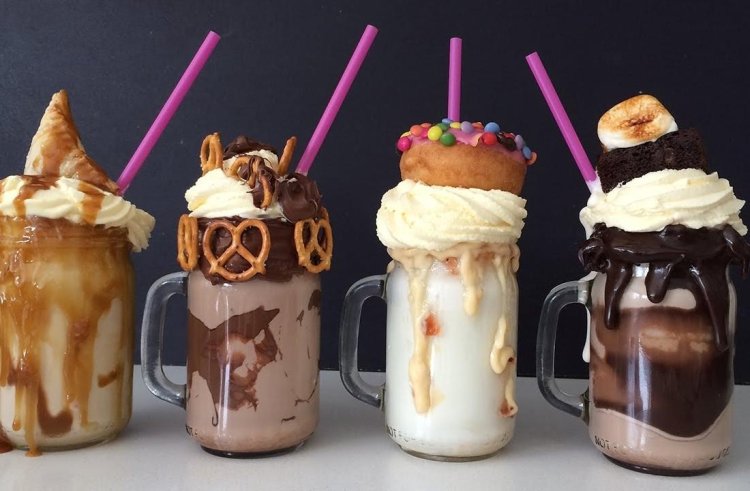
Milkshakes are flavored milk and ice cream refreshments frequently lavishly garnished and served cold. The first published mention, in 1885, was a little different, and it referred to a whiskey drink similar to eggnog employed as a health treatment.
Milkshakes were already being prepared as milk-based drinks with flavored syrups at the end of the nineteenth century. The development of malted milk powders containing dried milk, malted barley, and wheat flour, as well as the popularity of electric blenders, prompted the development of a more recognized milkshake form.
Pulled Pork
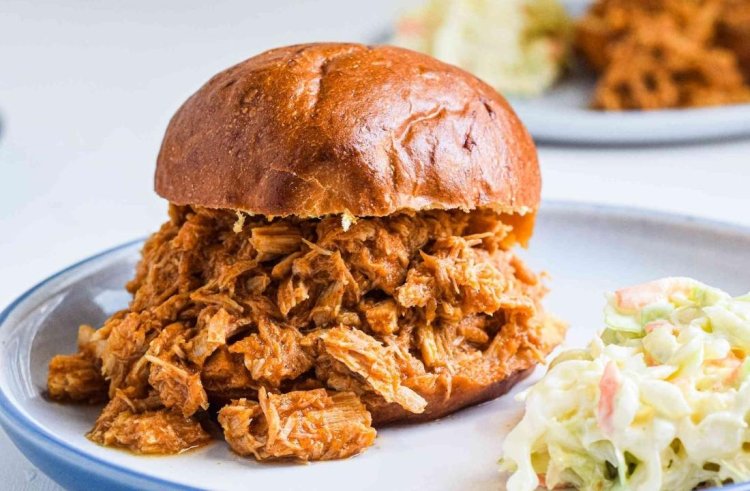
Torn pork is an American barbecue technique that involves gently cooking pork meat over low heat to produce tender meat that can be readily pulled into little pieces. It is a western North Carolina specialty that traditionally uses shoulder slices of pork prepared with vinegar, pepper, and tomato sauce.
The whole pig is cooked and plucked in the state's eastern portion, and the sauce is frequently devoid of tomatoes. It spread throughout the United States over time, and now, pulled pork comes in various flavors, from different cuts of meat and cooking times to marinades and sauces.
Also read: Some of the most Outraged Fast Food in the World
Add Block
Frozen Yogurt

Frozen yogurt is a frozen dish made using yogurt and (sometimes) other dairy products and flavorings. It has less fat than ice cream because it is made with milk rather than cream. Frozen yogurt is typically provided with various toppings such as strawberries, bananas, cookies, and candy bits.
The first frozen yogurt was made in New England in the 1970s, but the identity of its creator is unknown. Created as a low-fat alternative to ice cream, it was not a major hit because most Americans preferred sweet ice cream over tangy frozen yogurt.
Add Block
Grilled Cheese
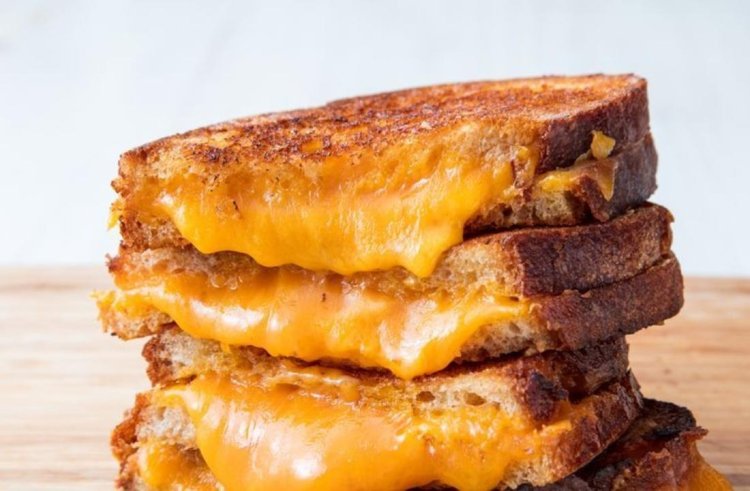
Grilled cheese is a traditional American sandwich with one or more cheese kinds sandwiched between two layers of bread. The outsides of the pieces are buttered, and the sandwich is quickly fried, generally in a skillet or on a griddle, until the bread is golden and the cheese melts.
Although cheese and bread have been a popular combination since the early 1900s, and the French has their own comparable Croque Monsieur sandwich, the grilled cheese sandwich originally originated in the United States in the 1920s as an open-faced slice of bread covered with shredded cheese.
Doughnut
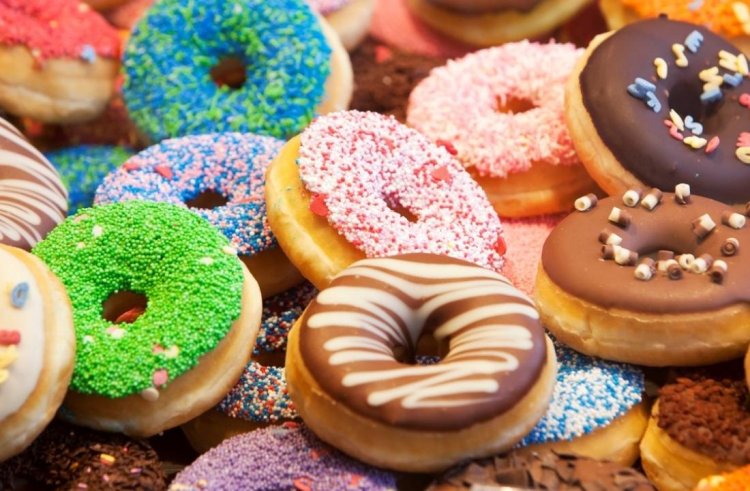
Although researchers discovered petrified remains of fried cakes with holes in the center, it is still unclear how the early Native Americans prepared these delectable fried dough delicacies known today as doughnuts. Doughnuts were once called olykoeks (oily cakes), and pilgrims from Holland are credited with introducing them to the United States.
Those early doughnuts were frequently filled with prunes, raisins, or apples. During World War I, the doughnut was already a popular American snack, eaten by soldiers fighting overseas as a remembrance of home.
In the 1950s and 1960s, the popularity of these sweets was so high that new doughnut chains, such as Krispy Kreme and Dunkin' Donuts, began to appear on the market, contributing to the notion of doughnuts as a breakfast food.
Add Block
Chocolate Chip Cookie
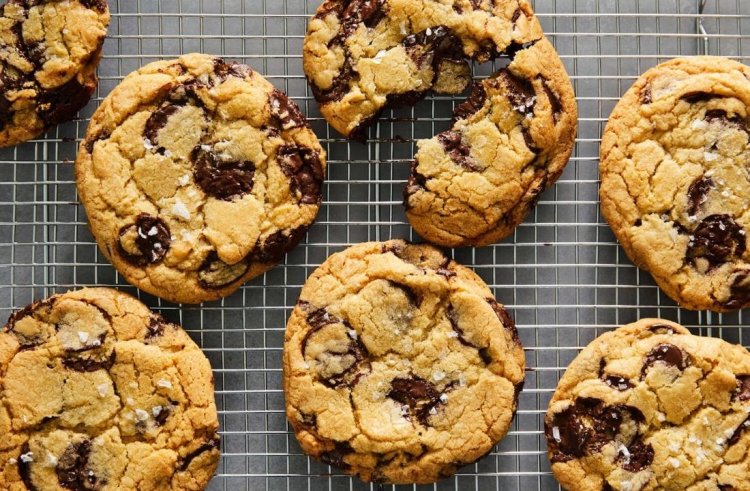
Chocolate chip cookies, typically served with a glass of milk or a cup of hot tea or coffee, are nicely balanced in flavor between salty and sweet, lovingly chewy in texture, and filled with miniature melting chocolate pyramids, transporting a generation of Americans back to their childhood.
The origin tale of these delectable delights is almost as intriguing as the cookies themselves. The Toll House Inn in Whitman, Massachusetts, was purchased in 1930 by Ruth Graves Wakefield and her husband. Ruth's food was so wonderful that the inn quickly established an exceptional reputation.
Also read: Every Food and Beverage Company with a Celebrity Investor
Add Block
Fajitas
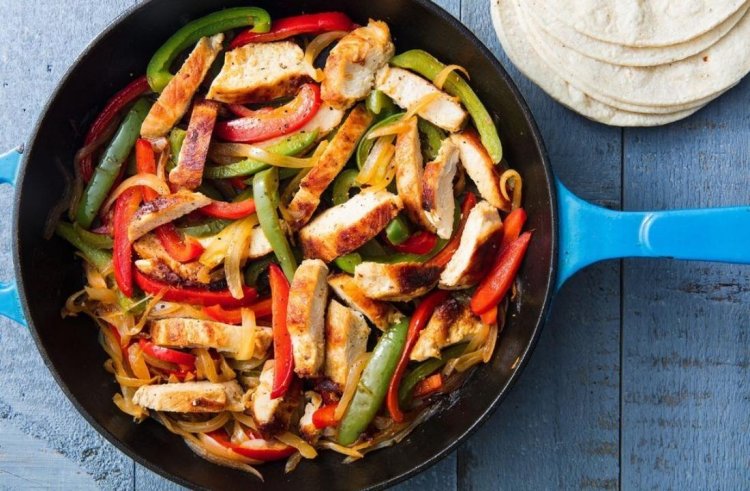
Fajitas are a popular Tex-Mex cuisine that consists of marinated; grilled skirt steak served in a wheat flour tortilla. The first printed reference to the word fajita about food came in 1975, and ten years later, it became one of the most popular Tex-Mex dishes.
The word fajita comes from the Spanish word faja, which means girdle or strip, and refers to a cheap cut of beef that covers the diaphragm and is regarded fairly unattractive by many. Mexican ranch workers used to tenderize skirt steak by smashing it and marinating it in lime juice before frying it over an open fire and serving it in a wheat tortilla with various condiments in the 1940s.
Bourbon
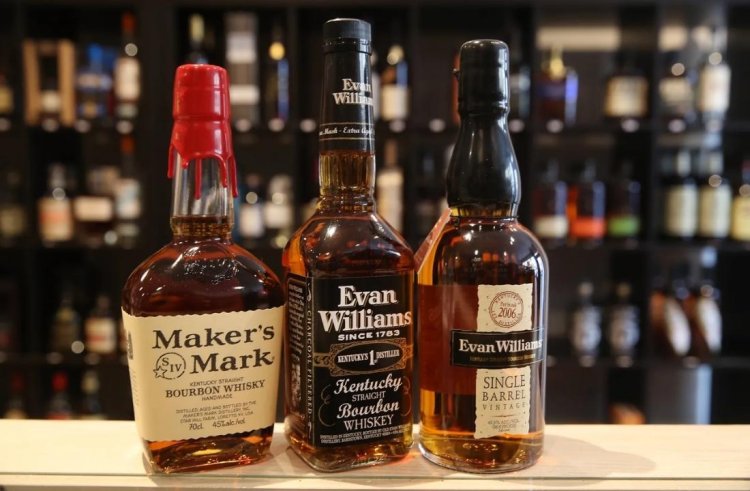
Bourbon is an American whiskey created mostly from corn mash; the minimum requirement is 51%, but other grains such as rye, barley, or wheat may also be used. Although most bourbon is produced in Kentucky, it can technically be produced anywhere in the United States.
The whiskey is almost always matured, and the process must take place in freshly charred oak casks, although no minimum maturing duration is specified in the laws. If whiskey is designated as a straight bourbon, it has been aged for at least two years, and all bourbon whiskey must be bottled at a minimum of 40% ABV.
Add Block
Burrito
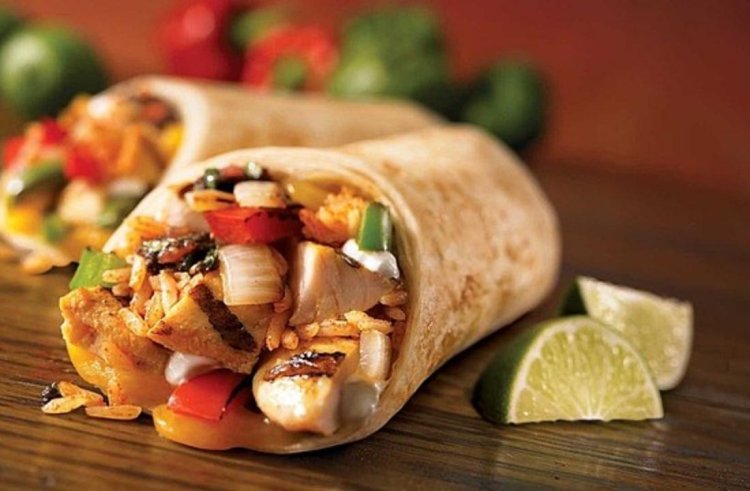
Burrito is a dish made of a wheat flour tortilla wrapped so that the savory filling on the inside is completely enclosed. The filling comprises various items such as beef, beans, rice, lettuce, guacamole, and cheese.
Its name means "little donkey" in Spanish, and one popular theory holds that it is derived from the shape of the bedrolls and packs carried by the donkeys. Some claim that the dish was invented in the nineteenth century by vaqueros in Northern Mexico, farmers in California, or Sonoran miners.
Also read: Most popular drinks in America
Add Block
Mac and Cheese
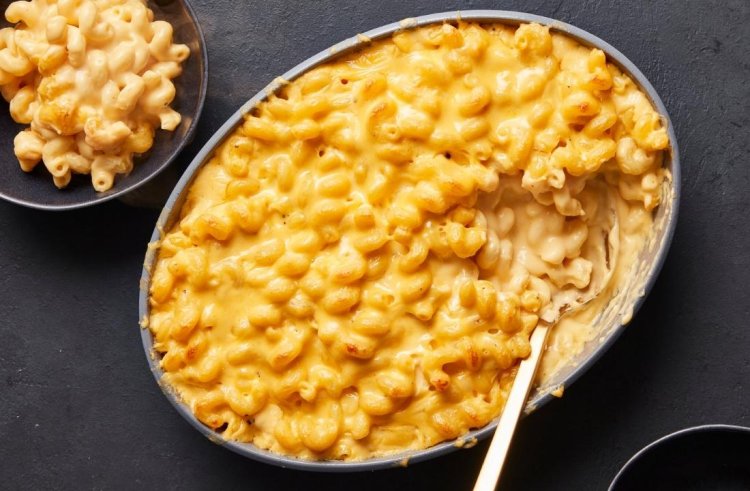
One of the most popular dishes in the United States is macaroni and cheese, a simple combination of macaroni and melted cheese. The traditional American combination is curled macaroni and Cheddar cheese, but modern variations include veggies, breadcrumb toppings, or exotic additions like crab, lobster, or truffles.
Although it is a popular American dish, it was most likely influenced by similar pasta dishes enjoyed in Italy and France. It was popularized in the United States by none other than Thomas Jefferson. During his European travels, he fell in love with the mix of pasta and cheese, and upon his return, he began importing macaroni and had the pasta machine sent to Virginia.
Fried Chicken
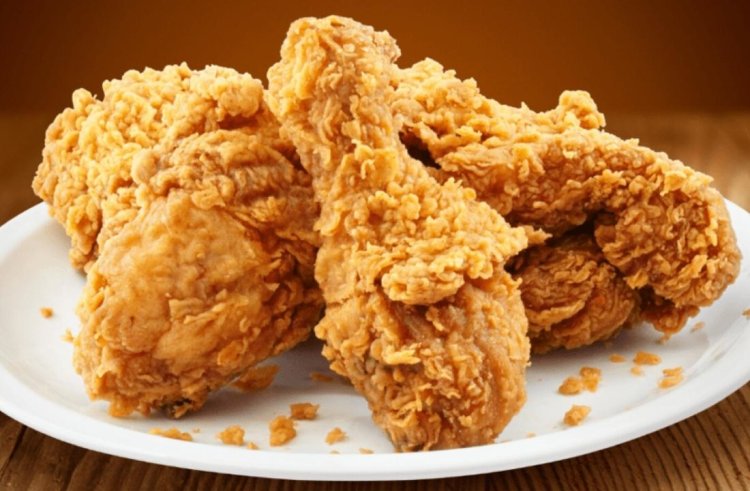
Fried chicken, the most popular Southern delicacy, is the subject of many debates, with everyone involved having a favorite, whether it's what their mothers used to prepare, a cult roadside café, or an ancient restaurant. However, everyone agrees that the meat should be juicy, succulent, and tender, with a crunchy, golden-brown crust.
It all began during the colonial period when Scottish immigrants arrived in the South and brought their fried chicken recipes. The meal gradually gained popularity because enslaved Africans contributed new flavors and spices. Seasonings such as salt, pepper, and hot chilies are common, and the meat should be hand-edible so that the client may bite the crust and the meat once.
Add Block
Brownies
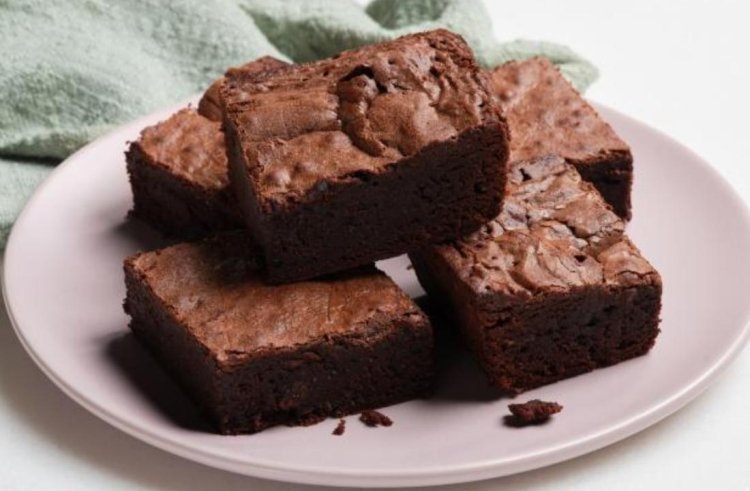
One of the most popular American desserts, brownies are deliciously chewy, dense, and fudgy with a rich chocolate flavor. According to legend, Bertha Palmer, the proprietor of the Palmer House Hotel, asked the chef to create a new chocolate dessert to serve at the 1893 Colombian Exposition.
Others claim it was an accident when Brownie Schrumpf, a librarian, accidentally left out baking powder from a chocolate cake, resulting in a thick, black cake bar. Whatever its origins, what popularised brownies in the 1950s were fast, boxed mixes created by two brands - Duncan Hines and Betty Crocker.
Add Block
Cupcake

A cupcake is a little cake baked in a thin paper mold or aluminum cup. Typically, one cupcake should serve one person. The first reference to a cupcake can be found in Amelia Simmons' 1796 cookbook, American Cookery.
Her recipe instructed her to bake a cake in little cups. The phrase "cupcake" originally appeared in Eliza Leslie's Receipts cookbook in 1828. Cupcakes have become a large industry over the years, and the term "cupcake" now refers to any little cake the size of a cup.
Barbecue
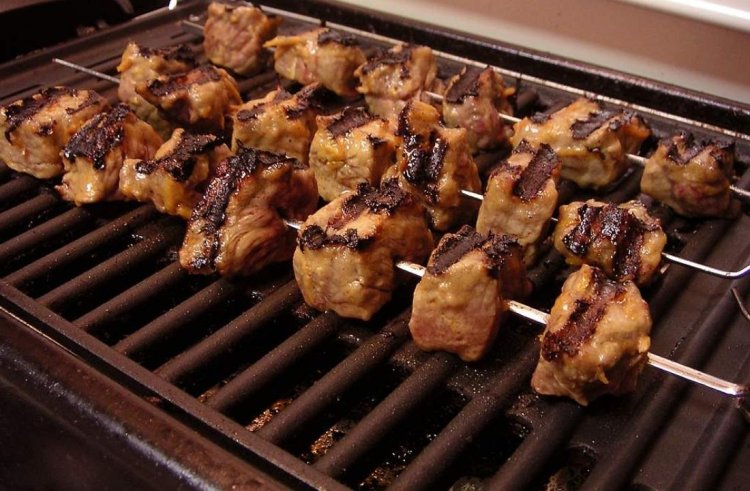
Barbacoa, the tradition of smoking meat that the Caribbean indigenous practiced long before the colonists came, is directly responsible for modern American barbecue. The centuries-old practice of smoking whole hogs over a fire pit is currently popular in Virginia and North Carolina.
Barbecue was originally found largely in rural areas. Still, it has recently spread to larger cities, and how could it not with the aromatic and fragrant allure of succulent, juicy meats, bringing the mouth-watering nibbles to cult status? Barbecue styles vary widely from north to South and east to west and are strongly tied to geography.
Add Block
Cheeseburger
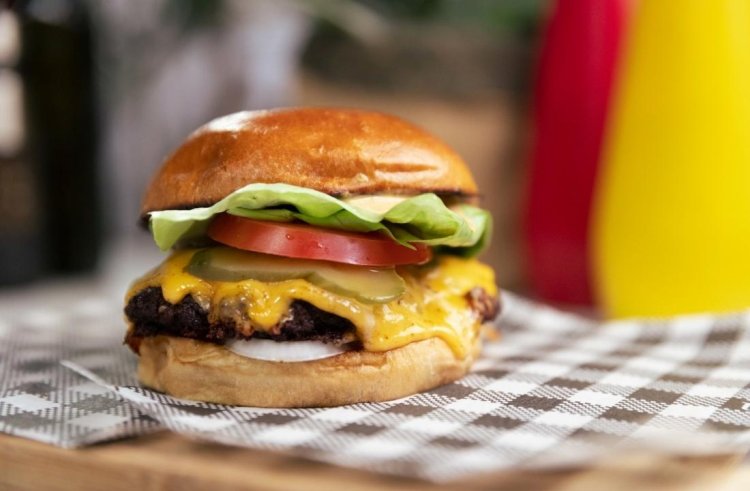
The cheeseburger is a logical progression of the beloved hamburger, with the main variation being that a slice of cheese is added on top of the meat patty in the cheeseburger. Although American cheese was the original choice, Swiss, Cheddar, and a variety of blue cheeses were also utilized to construct this delectable sandwich.
The history of cheeseburgers is fairly confusing, as it is with the most incredibly popular foods. Adding cheese to hamburgers did not become popular until the mid-1920s, although many claims to have invented the first cheeseburger.
The most widely accepted legend holds that it was created by a 16-year-old short-order cook named Lionel Clark Sternberger at The Rite Spot in Pasadena, California, when he added a slice of American cheese to a sizzling hamburger patty.
Burger
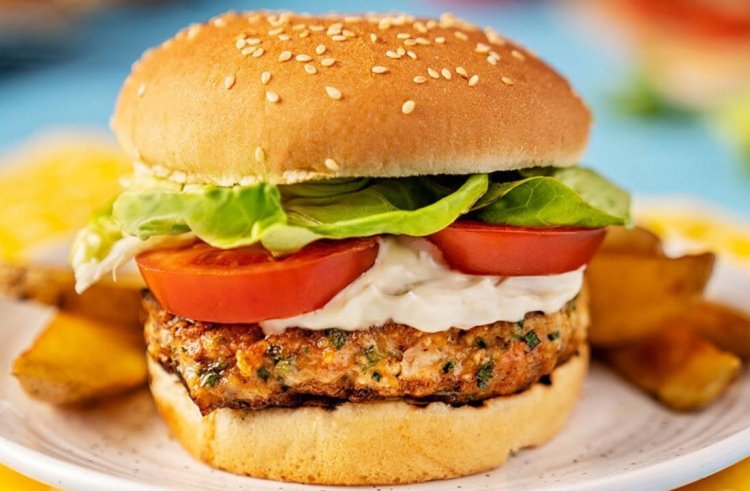
Mimi Sheraton, the culinary critic for the New York Times, said the burger evolved from the German Deutsches beefsteak. It got its second name (hamburger) because numerous German immigrants came from the port of Hamburg.
The burger is a delectable dish made from medium-rare seared beef patties packed on fresh, gently toasted buns and topped with onion slices, ketchup, or Dijon mustard. Of course, other condiments and veggies are available, such as salad greens and tomatoes, but Mrs. Sheraton claims they make the meat chilly.





